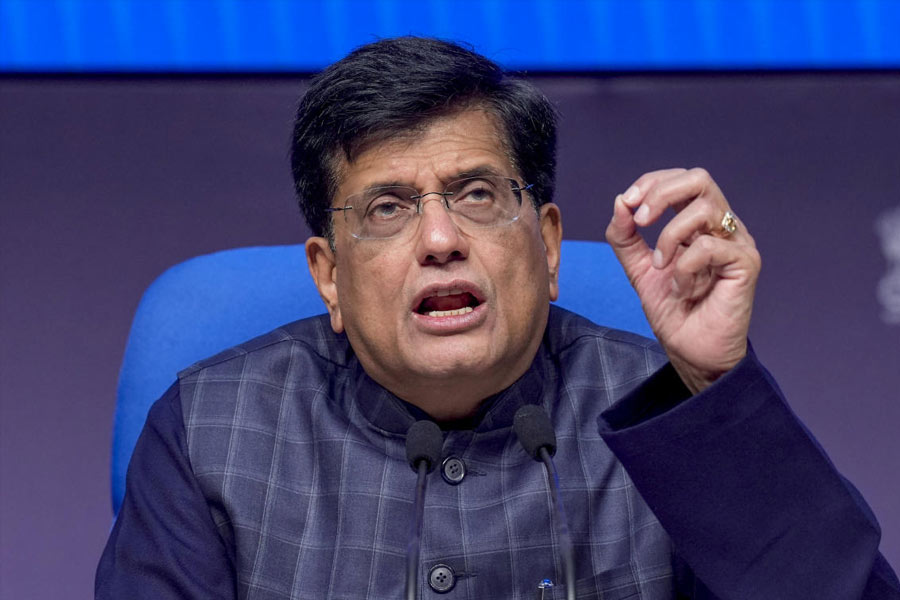 |
 |
| LOOK OUT, BOYS!: Girls having fun in Westminster School, London |
Why Doon should admit women
Why mend something when it ain’t broke? — which seems a good reason for not forcing the Doon School to go co-ed.
But President Pratibha Patil, speaking at the school’s 75th foundation day celebrations, suggested: “Girls should also be made a part of this wonderful environment.”
By the same argument, the best female establishments — Miranda House or Lady Shri Ram College in Delhi, Loreto College in Calcutta or any top flight girls’ school — ought to be prepared to admit men.
Doon doesn’t work for everyone. I remember Tarun Tahiliani, the son of a very manly Indian admiral, telling me that his teachers got very worried when they caught the future fashion designer “drawing pictures of young girls in little frocks”.
At Doon there can be a sensible solution along the lines of Westminster School in London — admit India’s brightest, prettiest and most fashionable girls into the last two years. Perhaps it should also allow a sprinkling of spirited Pakistani girls — say, pupils like Fatima Bhutto.
It should certainly discourage dullard sons of rich dads who were once at Doon from applying.
Westminster, which began admitting girls in 1973, says: “The co-educational sixth form at Westminster offers an exciting, stimulating and challenging environment for learning.”
Westminster has just about the highest Oxbridge hit rate in the country.
In 2009-10, out of a total of 747 pupils, 132 were girls, though in the sixth form the proportion rose to a third.
“The girls, even in small numbers, really have made a difference,” Westminster’s former headmaster, the late John Rae, wrote in his diary.
Not so Fab
Has Fabindia, the clothing chain that has been a favourite with visitors from the UK, the US and other countries — I have urged many a foreigner to shop there — become too big for its own good?
It now claims to have 126 stores but I must say its Salt Lake branch in Calcutta, where I did a bit of shopping recently, leaves something to be desired. Perhaps it needs a new manager.
Collars on shirts were crushed, for example. On the price tags, the prices had been blatantly snipped out.
“We are increasing the prices,” was the explanation.
Selfridges or Liberty in London — where Fabindia has been threatening to open a branch — would not get away with such slipshod standards — nor would I expect to see them at the flagship Fabindia outlet at Kala Ghoda in Mumbai.
My wife, who has almost singlehandedly kept Fabindia in business over the years, finds she cannot wear the nice top I got her because the security tag with a steel pin had not been removed.
Fabindia, where prices are now no longer competitive, is marking its 50th year, amid signs it is ready to be pensioned off.
 |
Better than Booker
At the Oxford Bookstore in Park Street I spotted a copy of Liaquat Ahamed’s Lords of Finance, which won the prestigious £30,000 Financial Times and Goldman Sach Business Book of the Year in 2009.
Kenya-born Liaquat was on this year’s judging panel which has just announced the 2010 winner: Raghuram G. Rajan’s Fault Lines: How Hidden Fractures Still Threaten the World Economy, published by Princeton University Press.
Rajan, who got his BA from IIT Delhi in 1985 and MBA from IIM Ahmedabad in 1987, is now the “Eric J. Gleacher Distinguished Service Professor of Finance at the University of Chicago’s Graduate School of Business”. He has worked for the International Monetary Fund (IMF), is an adviser to Manmohan Singh and was apparently one of the few economists who saw the global financial crisis coming.
I foresee Fault Lines being available in India soon.
 |
| MONEY MATTERS: Adam Smith (top) is legal, Edward Elgar is not |
Taking note
Beware those buying foreign currency in India before travelling to London. A cousin from Calcutta, on her way to the US, has stopped over in London with her husband who had been handed a wad of £20 notes by his agent, who is authorised by the Reserve Bank of India, no less, to sell foreign currency.
Only when they tried buying something in London with one of the notes with the image of Edward Elgar did they discover these have not been legal tender since June 30 this year.
Did the agent based in Dalhousie, in Calcutta, not know or was he getting rid of the stash he has collected?
The Bank of England tells me it “absolutely” informed all central banks, including the Reserve Bank of India, that it was changing the design of £20 notes, which constitute 50 per cent of the paper money in circulation — “we change the design of notes to stay one step ahead of counterfeiters”.
Shops no longer accept the old notes, and it is up to banks whether they agree to swap them. Mine was obliging enough to accept the old notes to help out my relatives, credit my account and give new notes in exchange.
From July 1 only notes with the image of Adam Smith, the Scottish author of the classic An Inquiry into the Nature and Causes of the Wealth of Nations, have been legal tender.
Now, I hear that a niece who has come to study in London was given out-of-date dollar bills by an agent in dodgy Delhi.
i spy
 |
| TIME SAVER: Evgeny Lebedev with one of the first copies of |
Though rich Russians are more recent arrivals on the UK business scene, they have stolen a march on wealthier Indians by moving into the media, none more so than the oligarch Alexander Lebedev.
Lebedev, 50, now owns three national newspapers: the Evening Standard, The Independent and The Independent on Sunday.
He has installed his 30-year-old son, Evgeny, as chairman of his expanding newspaper empire.
And last week the Lebedevs launched a new national newspaper, the first in Britain for 25 years.
Called i after presumably “Independent”, the new 56-page tabloid costs only 20 pence compared with the £1 cover price for The Daily Telegraph, The Times and The Independent.
In the words of its owners, i is intended to offer a “colourful, accessible, concise and intelligent” essential daily briefing to “time-poor newspaper readers”.
In a declining industry we need all the newspapers we can get. But i looks too much like a free sheet and does not yet have the feel of an upmarket newspaper. There is still a gap at the top.
I myself would have preferred a potted version of something like The New York Times.
Tittle tattle
Imposing legal sanctions on Arundhati Roy for saying Kashmir isn’t an integral part of India would be counterproductive — she will only write about it in The Guardian or The Independent along the lines of “Brave little me is being punished for telling the truth”. Already, she has been the subject of a supportive news story in The Guardian.
The Booker Prize winner has a constituency among the Left in Britain where she is considered exotic — not least because of the diamond nose stud she affects. Picture editors liked her a lot more before she had the fetching curls in her hair shorn to enhance the severe but fashionable feminist look.
If she wants to be really radical she should do a piece for The Guardian arguing Birmingham is now an integral part of Mirpur.










